Do you feel nervous driving when it starts to rain or snow? I know that feeling.
I remember gripping my steering wheel too tightly during a snowstorm, wondering if my car would stay on the road.
Many drivers worry about this sudden loss of control when roads become slick, or the weather turns bad.
Here’s something that made me feel better: Honda’s all-wheel drive systems work differently than those of most other car brands.
The system kicks in right when you need extra grip, sending power to the the wheels that need it most.
Whether you’re looking at a compact HR-V or a family-sized Pilot, Honda’s AWD technology helps keep you steady on the road.
Let me show you how these vehicles work and help you find one that fits your needs.
Understanding Honda’s All-Wheel Drive Technology
Understanding how Honda’s AWD systems work before examining specific models can be helpful. Let me explain the two main systems in simple terms.
Intelligent Variable Torque Management (i-VTM4™)
Honda uses a smart system called i-VTM4 for larger vehicles. I like how it works: Imagine having four different power dials, one for each wheel.
The system constantly checks each wheel and adjusts the power to each one separately.
If you’re driving on a snowy road and your front right wheel hits an icy patch, the system quickly sends more power to the other wheels with better grip.
This happens so fast that you might not even notice it working. I’ve found that this system works great in Honda’s bigger vehicles, such as the Pilot and Passport.
Real-Time AWD™ With Intelligent Control System
Honda uses a different approach for daily drivers, such as the CR-V and HR-V, called Real-Time AWD.
This system is perfect for typical city and highway driving because it’s smart and efficient.
In simple terms, the system starts by sending power mainly to your front wheels to save fuel. But it’s always watching and ready to act.
As soon as sensors detect any wheel slip—like when you hit a wet patch of road—they automatically send power to your back wheels, too.
The best part? All this happens instantly. You don’t need to push any buttons or turn any dials.
The system handles everything automatically, so you can focus on driving while the car handles the tricky stuff.
Comprehensive List Of Honda AWD Models
Let me walk you through each Honda model with AWD. I’ve spent time exploring these vehicles, and I’ll share what makes each one special.
1. Honda HR-V: Your Urban Companion
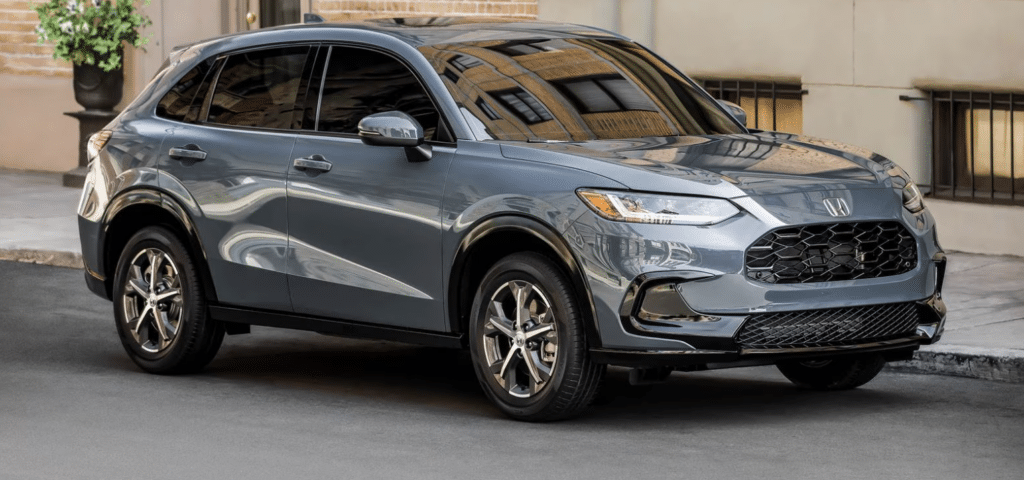
I find the HR-V perfect for city living with a touch of weekend fun.
This compact crossover’s real-time AWD system fits nicely, giving you extra confidence when the weather turns tricky. Y
You can get AWD on any trim – LX, Sport, or EX-L—which I think makes it really flexible for different budgets.
What stands out to me is how the HR-V balances city-friendly size with capable handling.
2. Honda CR-V: The All-Around Star
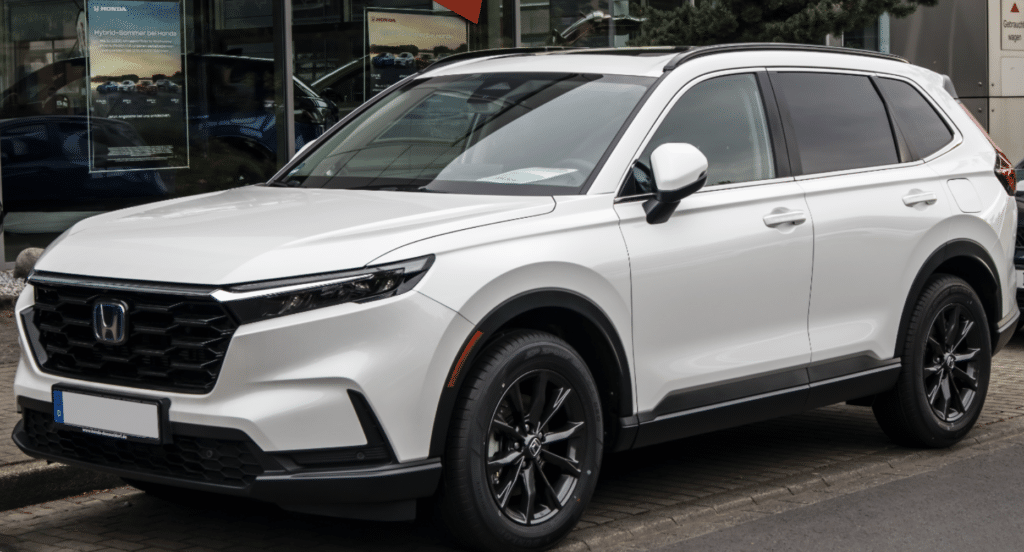
The CR-V takes things up a notch. I’m particularly impressed by Honda’s AWD offerings, both regular and hybrid.
If you choose the regular CR-V, you can add Real-time AWD to LX, EX, or EX-L trims.
I like that Sport Touring Hybrid models come with AWD as standard—no extra choices are needed.
3. Honda Pilot: The Family Champion
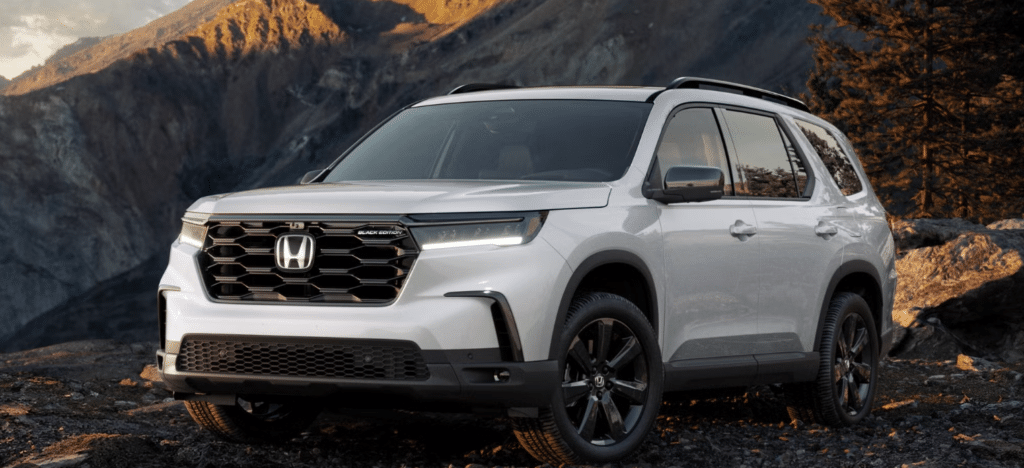
The Pilot really delivers for bigger families. Its i-VTM4 AWD system is seriously capable.
You can add it to LX, Sport, EX-L, and Touring models. If you pick TrailSport or Elite trims, you get it automatically.
The best part is the 5,000-pound towing capacity with AWD—perfect for family camping trips or boat hauling.
4. Honda Passport: The Adventure Seeker
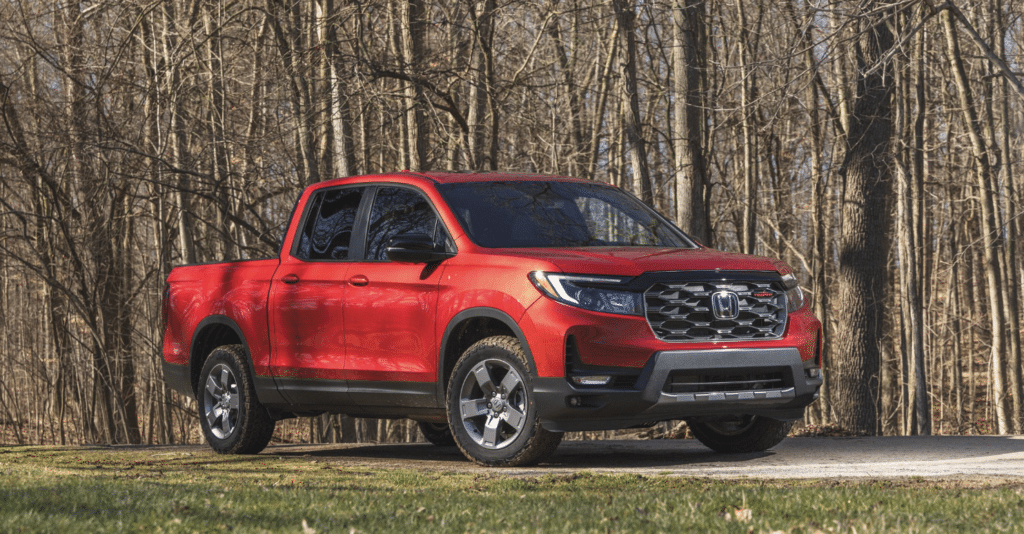
The Passport means business when it comes to AWD capability.
Every EX-L, TrailSport, and Elite model comes standard with i-VTM4. I love how Honda designed this one for people who want to mix daily comfort with weekend adventures.
The higher ground clearance and AWD prepare it for almost any road condition.
5. Honda Ridgeline: The Do-It-All Truck
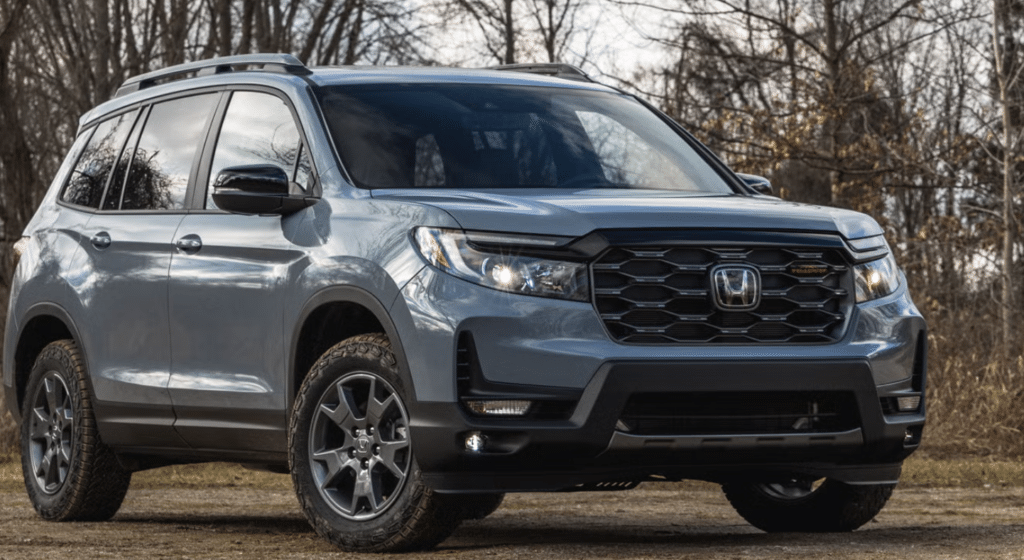
Here’s what makes the Ridgeline special: Every trim (Sport, RTL, RTL-E, and Black Edition) comes with i-VTM4 as standard.
There’s no need to choose. This truck is incredibly practical—it handles like a car but works like a proper truck.
With 5,000 pounds of towing power, it’s ready for serious work or play.
Benefits Of Honda AWD Vehicles
Improved Safety And Traction
Let me tell you why I value Honda’s AWD systems on slick roads.
When rain makes the pavement slippery or snow covers your path, these systems spring into action. I’ve noticed how the car stays stable even when one wheel hits a patch of ice or mud.
The extra grip comes from how the system works: sending power to the wheels that need it most.
Think of it as having four helpers, each making sure their wheel keeps turning just right. On wet roads, this means less chance of sliding when you start moving from a stop.
Enhanced Driving Performance
Even on dry roads, Honda’s AWD systems make a real difference. Take a sharp corner, and you’ll feel how steady the car stays.
The system helps by sending different amounts of power to each wheel as needed.
What impresses me most is the smooth way it all happens. You don’t feel the system working – you just notice how much more confident the car feels.
The extra stability helps you stay in control when you need to pass another vehicle or merge onto the highway.
Confidence In Challenging Weather
What I really like about Honda’s AWD system is that it’s always ready but only steps in when needed.
During heavy rain, it helps prevent hydroplaning by keeping all four wheels working together.
In snow, it gives you that extra push you need to get moving without spinning your wheels.
But there’s more to it than just bad weather handling. The system helps on:
- Steep driveways
- Gravel roads
- Wet leaves in fall
- Uneven surfaces
Choosing The Right Honda AWD Vehicle
For Urban Commutes
The Honda HR-V and CR-V stand out as excellent choices for city driving:
- The HR-V offers a compact design perfect for city streets. All trim levels (LX, Sport, EX, and EX-L) can include real-time AWD with an Intelligent Control System, while the Touring model includes it as standard equipment.
- The CR-V combines comfort with practicality. Its name stands for “Comfortable Runabout Vehicle,” which perfectly describes its purpose. The LX, EX, and EX-L models offer Real Time AWD as an option, while the Touring edition comes with it as standard.
For Family Adventures
When you need more space and capability:
- The Honda Pilot is an excellent three-row SUV. Its i-VTM4 AWD technology offers enhanced control. The technology is available on LX, Sport, EX-L, and Touring models and is standard on TrailSport and Elite versions. With AWD, the Pilot can tow up to 5,000 pounds.
- The Honda Passport provides strong performance for families who want extra capability. The i-VTM4 AWD system is an option on Sport, EX-L, and Touring trims and is standard with the Elite trim. When equipped with AWD, the Passport can tow up to 5,000 pounds.
For Utility And Towing
The Honda Ridgeline stands out for its mix of comfort and capability:
- This midsize pickup truck comes with the i-VTM4 AWD system standard across all versions (Sport, RTL, RTL-E, and Black Edition).
- It maintains smooth driving characteristics while offering serious utility.
- With AWD, the Ridgeline can tow up to 5,000 pounds, matching the capability of Honda’s larger SUVs.
Conclusion
Honda’s lineup of AWD vehicles offers something for every driver’s needs.
Each model has its own strengths, from the urban-friendly HR-V and CR-V with their real-time AWD system to the family-oriented Pilot and Passport featuring i-VTM4 technology.
The Ridgeline rounds out the collection by combining pickup utility with sedan-like comfort.
These vehicles show Honda’s commitment to creating vehicles that handle various conditions well while maintaining fuel efficiency and driving comfort.
Whether steering city streets or facing challenging weather, Honda’s AWD technology continues to give drivers confidence and control.


